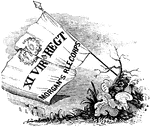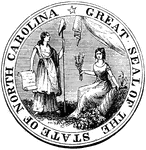Clipart tagged: ‘kamericanrevolutionflag’

New England Flag
"The New England flag. This is copied from an old Dutch work, preserved in the library of the New York…
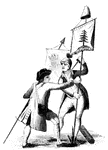
Pine-Tree Flag
"The Pine-Tree Flag. This engraving is a reduced copy of a vignette on a map of Boston, published in…
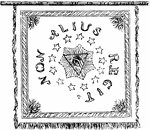
Pulaski's Banner Back
"Pulaski's Banner. On the other side, in the center, is the All-seeing Eye, with the words Non Alius…
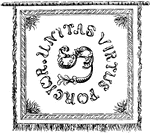
Pulaski's Banner Front
"Pulaski's Banner. On one side of the banner are the letters U. S., and in a circle around them the…

William Tryon Seal
"Seal and signature of Tryon. William Tryon was a native of Ireland, and was educated to the profession…
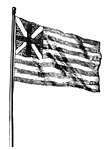
Union Flag
"Union Flag. The first recognized Continental Standard, raised for the first time January 2, 1776."—E.…
